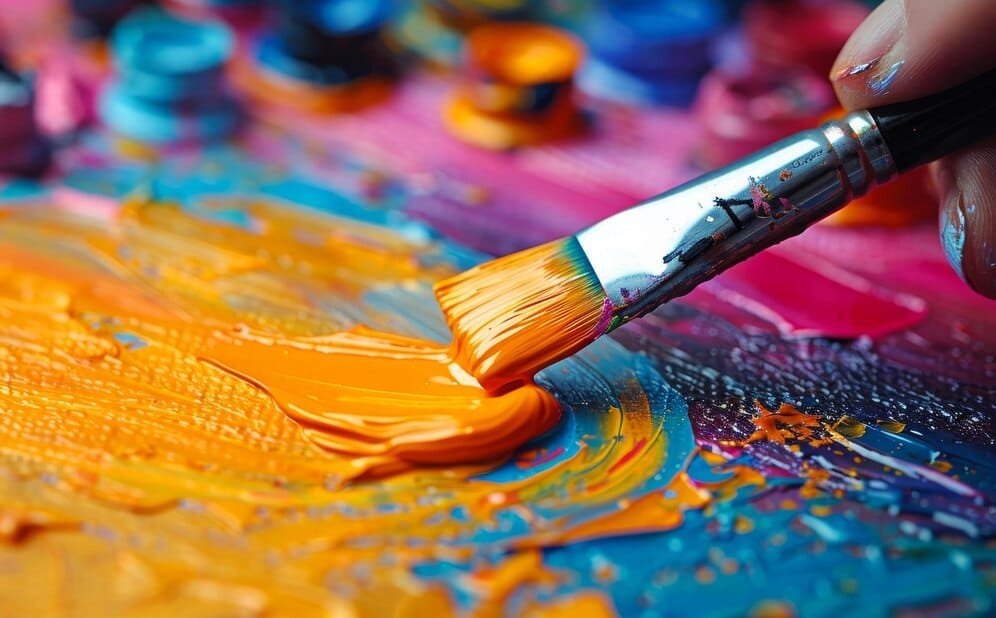Introduction to Water-Based Paint for Interiors
Water-based paint is a widely used type of coating that utilizes water as its principal solvent. Unlike solvent-based paints, which rely heavily on organic compounds, water-based formulations are designed to be more environmentally friendly, emitting fewer volatile organic compounds (VOCs). This characteristic makes them more appealing to both consumers and professional painters, particularly for indoor applications where air quality is a significant concern.
The composition of water-based paint typically includes a bond-forming agent, pigments for color, additives for specific properties, and water. As water evaporates during the drying process, the remaining components harden to form a durable finish. The paint remains flexible and less prone to cracking, which is essential for maintaining the aesthetic value of interior surfaces.
An essential characteristic of water-based paints is their quick drying time. This feature allows for faster completion of painting projects and facilitates multiple coats to achieve desired results in a shorter period. Furthermore, the clean-up process is simplified, as brushes and other tools can be easily washed with soap and water instead of requiring solvents for cleaning.
Water-based paint is suitable for a variety of indoor applications, including walls, ceilings, and even furniture. One popular variant is the use of mithila paints, an artistic expression originating from the Mithila region of India, characterized by intricate designs and bold colors. These paint formulations enable artisans and homeowners alike to create distinctive interiors while benefiting from the advantages of water-based products.
In conclusion, water-based paints represent an innovative and eco-friendly option for interior projects, offering advantages over traditional solvent-based paints. Understanding the basics of their composition, functionality, and diverse applications can assist homeowners and professionals in making informed decisions for their painting needs.

Benefits of Using Water-Based Paint
Water-based paints have gained significant popularity in recent years, particularly in the realm of interior applications. One notable advantage of mithila paints, which are often water-based, is their lower Volatile Organic Compound (VOC) emissions. This characteristic contributes to improved indoor air quality, making it a safer choice for homes, especially those with children or pets. Unlike traditional solvent-based paints, water-based alternatives significantly reduce the release of harmful chemicals into the atmosphere, aligning with modern sustainability practices and health-conscious living.
In addition to their lower VOC levels, mithila paints also offer remarkable ease of cleanup. Because these paints are primarily composed of water, cleaning brushes, rollers, and other tools requires only soap and water. This contrasts sharply with solvent-based paints, which necessitate chemical thinners or harsh solvents for effective cleanup, potentially posing health risks. As a result, using water-based paints simplifies the painting process and minimizes environmental impact during disposal.
Another significant benefit of water-based paints is their quick drying times. Depending on ambient conditions, many water-based paints can dry within an hour, allowing for faster recoating and reduced overall project time. This fact often appeals to homeowners and professionals alike, as it allows them to complete projects efficiently and minimizes downtime. Furthermore, the rapid drying properties of mithila paints help to avoid dust and debris settling on wet surfaces, which can adversely affect the final finish.
Lastly, water-based paints are available in a wide variety of finishes, ranging from matte to glossy, enabling personal expression and creativity in design projects. This extensive selection ensures that individuals can find the right product to match their aesthetic needs, thereby making water-based paints a versatile option for any interior space.
Types of Water-Based Paint
Water-based paints have gained significant popularity in various interior applications due to their versatility and eco-friendliness. Among the most common types are acrylic and latex paints, both of which offer distinctive characteristics suited to different needs. Acrylic paint, known for its durability and flexibility, is ideal for surfaces that may require some resilience against chipping or peeling. It dries quickly and provides excellent color retention, making it a favored choice for walls, trim, and decorative elements.
Latex paint, on the other hand, is water-soluble and characterized by its ease of use and clean-up properties, making it accessible for homeowners and professional painters alike. This type of paint is well-suited for interior walls as it provides a smooth finish and is less prone to fading compared to oil-based paints. Furthermore, latex paints are available in various finishes, including matte, satin, and gloss, allowing for customization based on the room’s ambiance.
In recent years, eco-friendly water-based paints have emerged, containing low levels of volatile organic compounds (VOCs) which minimize harmful emissions during application. These paints not only contribute to a healthier indoor environment but also boast comparable performance to traditional water-based options. They are increasingly favored in spaces where air quality is a priority, especially in homes with children or individuals with sensitivities.
When considering the types of water-based paints for your interior spaces, it is crucial to assess the specific characteristics of each option. Whether opting for acrylic for its robust qualities, latex for its versatility, or eco-friendly choices for their sustainability, each type offers unique benefits that cater to various preferences and requirements. Ultimately, choosing the right type of water-based paint can greatly enhance aesthetics while ensuring a safe and durable finish.
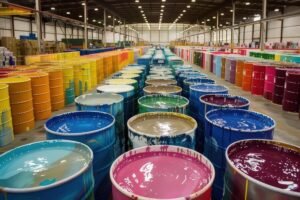
How to Prepare Surfaces for Water-Based Paint
Preparing surfaces correctly is crucial for achieving a flawless finish when using water-based paint. The initial step involves thoroughly cleaning the surface to remove dirt, grease, and any previous coatings that may interfere with adhesion. A mixture of mild detergent and warm water is often effective. Use a sponge or cloth for gentle scrubbing, followed by rinsing with clean water. Allow the surface to dry completely before proceeding.
Once the surface is clean, the next phase is sanding. This step is particularly important if the existing paint is glossy or if you are working with a smooth surface. Sanding ensures that the water-based paint can effectively adhere. Utilize fine-grit sandpaper to lightly roughen the surface. It’s advisable to wear a mask to avoid inhaling any dust. After sanding, clear away the dust with a vacuum or a damp cloth, and let the surface dry again.
In situations where the surface is porous or stained, applying a primer can prove to be beneficial. A suitable primer will enhance adhesion and block any stains or imperfections from seeping through the new coat. Select a water-based primer that complements the type of paint you plan to use. Apply the primer evenly using a brush or roller, and allow it to dry thoroughly as per the manufacturer’s instructions before proceeding with the main paint coat.
When dealing with previously painted surfaces, it’s essential to check for any peeling or flaking paint. These areas should be scraped away, followed by sanding to create a smooth finish. Ensuring that the surface is sound before applying mithila paints will enhance durability and finish quality. Meticulous preparation paves the way for an aesthetically pleasing result and the longevity of your paint job.
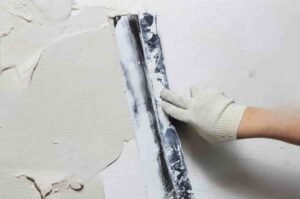
Application Techniques for Water-Based Paint
The successful application of water-based paint significantly depends on the right techniques and tools. For projects involving mithila paints or any other water-based options, preparation is key to achieving a flawless finish. Start by ensuring the surfaces are clean, dry, and free of any dust or grease, which can interfere with adhesion. It’s advisable to lightly sand glossy surfaces to enhance grip and to wash previously painted walls with a suitable cleanser.
When it comes to tools, select high-quality brushes and rollers specifically designed for water-based paints. Synthetic bristle brushes are ideal for smooth applications on flat surfaces, while rollers with an appropriate nap size will help cover larger areas efficiently and evenly. A ¼ to ½ inch roller nap is suitable for smooth to semi-smooth surfaces, whereas a thicker nap is recommended for textured walls. Additionally, using a paint tray can favor optimal loading of the roller, preventing excess paint that can lead to drips.
For the actual application, begin by cutting in around the edges with a brush. This technique involves outlining the perimeter of walls, doors, and windows, allowing for more precise control of the paint. Once the edges are complete, use a roller for the larger sections. Apply the paint in a ‘W’ pattern followed by straight strokes to distribute it evenly without leaving lines. It is crucial to maintain a wet edge to avoid visible lap marks, so work in manageable sections.
To achieve a smooth finish, avoid overworking the paint. Let each coat dry fully before applying the next layer, as per the manufacturer’s instructions. Mithila paints, known for their translucency, may require multiple coats for desired opacity. By adhering to these techniques, the application of water-based paint will result in a beautifully finished surface, free of common application issues such as roller marks and uneven coverage.
Choosing the Right Color and Finish
When it comes to selecting colors and finishes for interior spaces, water-based paints offer a versatile range that can significantly impact the atmosphere of a room. One of the first considerations is the amount of natural light a space receives. Lighter colors often enhance light reflection, making smaller rooms feel airy and spacious. In contrast, darker shades can add depth and a sense of intimacy, though they may absorb more light, potentially making a space feel enclosed.
Mood is another critical factor in color selection. Different shades evoke distinct feelings; for instance, blues are often associated with calmness and tranquility, while yellows can bring warmth and cheerfulness. It’s essential to consider the emotional response of the colors chosen, as well as their ability to harmonize with existing decor. When using water-based paints, you can create a seamless blend of colors that complement your furniture, artwork, and accessories.
In the context of finishes, the choice of sheen will also play a pivotal role in the final appearance of the space. Matte finishes tend to absorb light and can help hide imperfections on walls, making them a popular choice for bedrooms and living areas. Conversely, eggshell or satin finishes reflect more light, which can enhance the vibrancy of colors. These sheens are easier to clean and are ideal for high-traffic areas such as kitchens and hallways. High-gloss finishes offer a striking look and are often used for trim and cabinetry, providing a contemporary edge.
Combining these aspects, one can effectively utilize mithila paints to craft an interior space that is both aesthetically pleasing and reflective of personal style. A thoughtful approach to color and finish will ensure the desired ambiance, creating harmony throughout your home.

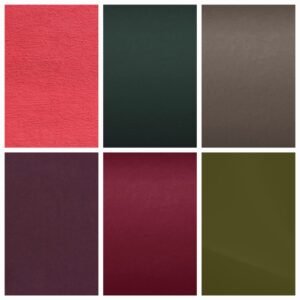
Long-Term Care and Maintenance of Water-Based Paint
The longevity and aesthetic appeal of interiors painted with water-based paint significantly depend on proper long-term care and maintenance. This type of paint offers numerous advantages, including a lower environmental impact and easier cleanup compared to oil-based alternatives. However, to ensure the painted surfaces, including those possibly enhanced by vibrant mithila paints, remain in excellent condition over time, adherence to specific maintenance practices is essential.
One of the primary steps in maintaining water-based painted surfaces is regular cleaning. It is advisable to use a soft cloth or sponge and a diluted mixture of mild soap and water for routine cleaning. Avoid abrasive cleaning agents, as they can damage the paint’s finish. For areas prone to stains or grime, such as kitchens or children’s rooms, cleaning should be more frequent. In instances where the surface is heavily soiled, gentle scrubbing may be necessary, always testing an inconspicuous area first to ensure no color loss occurs, particularly with colorful mithila designs.
Touch-ups represent another vital aspect of maintenance for water-based paints. When you notice scratches or chips, timely touch-ups can prevent further damage. It’s beneficial to keep some of the original paint for such occurrences; however, it is critical to ensure that the paint is still within its usability period. Repainting should ideally be carried out every five to seven years or when the surface starts to show wear and tear, allowing for the refreshed appearance of walls potentially adorned with intricate mithila patterns.
Ultimately, through regular cleaning, thoughtful touch-ups, and prompt repainting when necessary, the beauty of water-based paints can be preserved, ensuring that spaces remain both functional and visually appealing for years to come.
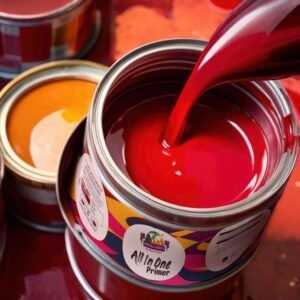
Common Myths About Water-Based Paint
Water-based paint has gained popularity in recent years, yet misunderstandings about its properties persist. One prevalent myth is that water-based paints are less durable than their solvent-based counterparts. In reality, modern advancements in formulation have led to water-based paints achieving remarkable durability. They are capable of withstanding wear and tear, making them suitable for both interior and exterior applications. Many brands offer water-based solutions that are just as resilient as oil-based paints, dispelling the notion that only traditional paints provide lasting results.
Another common misconception is that water-based paints do not provide a high-quality finish. Individuals often believe that these paints leave a dull, flat surface. However, this is not the case. Water-based paints are now available in various finishes, including gloss and satin, enabling homeowners to achieve the desired aesthetic. The smooth application of water-based paints often results in a clean and attractive finish, enhancing the overall look of interiors. Additionally, they are less prone to yellowing over time, ensuring that the colors remain vibrant and true.
Some consumers express concerns about the drying time associated with water-based paints, fearing that it would prolong the painting process. While water-based paints may dry faster than oil-based alternatives, this can be an advantage. The quick-drying nature allows for multiple coats to be applied in a single day, expediting project completion. This efficiency does not compromise the paint’s quality or longevity. Furthermore, painters appreciate how water-based formulations can be cleaned easily with soap and water, offering convenience that traditional paints do not provide.
In conclusion, debunking myths surrounding water-based paints is essential for informed decision-making. Understanding their durability, finish quality, and efficient drying times can lead to more homeowners embracing these modern solutions for their painting needs. Ultimately, exploring the world of water-based alternatives provides opportunities to achieve stunning results while maintaining environmental awareness.
Conclusion and Final Thoughts
In the realm of interior design, the choice of paint significantly influences the aesthetic and functional quality of a space. Throughout this guide, we have examined the merits of water-based paints, highlighting their environmental advantages, ease of application, and versatility. Water-based options offer a myriad of finishes that cater to both modern and traditional design sensibilities, making them a fitting choice for various interior projects.
Furthermore, the low levels of volatile organic compounds (VOCs) in water-based paints ensure that the indoor air quality remains a priority, making them an appealing option for health-conscious consumers. This aspect is particularly critical in living spaces where family and friends gather, as it minimizes the risks associated with long-term exposure to harmful chemicals. Additionally, water-based paints dry relatively quickly and provide easy cleanup, which proves beneficial for both amateur DIYers and professional painters alike.
As we discussed the historical significance of mithila paints in various cultures, it became evident that the legacy of such art forms can inspire contemporary applications. While the traditional techniques may differ, the philosophy behind using sustainable materials remains intact. Exploring methods like mithila paints can lead to creative approaches in modern interior applications. Therefore, considering water-based options like these can enhance your living spaces aesthetically and significantly, while aligning with a sustainable future.
Ultimately, when preparing for your next painting endeavor, take into account the numerous advantages presented by water-based paints. Their environment-friendly properties, combined with impressive results, render them an excellent choice for any interior project. Whether embracing classic colors or innovative techniques inspired by artistic traditions such as mithila paints, the choices available ensure a satisfying and stylish finish for your home or workspace.

